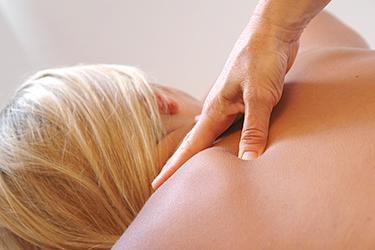“One of the overall aims of treatment for AF is lowering heart rate because high and irregular heart rates can lead to emboli forming and result in stroke,” said Professor Ozlem Ceyhan, a nurse trainer from Erciyes University, Kayseri, Turkey. “In these studies both acupressure and yoga are reducing heart rate, which should have a really beneficial effect. Furthermore, both approaches have the advantage of being easy to administer and cost effective, with no serious side effects.”
The ESC guidelines⁴have classified AF patients into five types based on duration: first detected (only one diagnosed episode); paroxysmal (recurrent episodes that self-terminate in less than seven days); persistent (recurrent episodes that last more than seven days); long standing (where it has lasted for longer than a year); and permanent (an ongoing long-term episode).
Medical Yoga shows beneficial effect in Paroxysmal AF
In the first abstract Maria Nilsson, a nurse from Danderyd Hospital, Stockholm, Sweden, who has practiced yoga for the last 10 years, set out to investigate whether yoga might help patients with paroxysmal AF (PAF) ¹.
“We chose to use medical yoga, which is a form of yoga involving deep breathing, light movements, meditation and relaxation. The advantage here is that the movements are easy to learn and can be performed while sitting in a chair,” said Nilsson. PAF, she added, is thought to involve between 25% and 62% of all cases of AF.
 In the prospective study, 80 patients with a diagnosis of PAF were randomized to the usual treatment and yoga (n=40) or just usual treatment (n=40). Patients in the yoga group attended hour long sessions of yoga once a week over the course of three months.
In the prospective study, 80 patients with a diagnosis of PAF were randomized to the usual treatment and yoga (n=40) or just usual treatment (n=40). Patients in the yoga group attended hour long sessions of yoga once a week over the course of three months.
Results show that after three months patients in the yoga group, showed significant decreases in systolic blood pressure (p=0.03), diastolic blood pressure (p=0.007) and heart rate (p=0.02) compared to those in the control group.
Systolic blood pressure for patients in the yoga group dropped from 137 mmHg at the start of the study to 132mmHg after three months; whereas the systolic blood pressure of patients in the control group increased from 138 mmHg at the start of the study to 141 mmHg after three months.
Diastolic blood pressure for patients in the yoga group decreased from 83 mmHg at baseline to 77 mmHg after three months; whereas diastolic blood pressure for patients in the control group rose from 84mmHg at baseline to 87mmHg after three months.
Heart rate decreased in the yoga group from 64 beats/minute at the start of the study to 60 beats per minute after three months; whereas heart rate rose in the control group from 65 beats per minute at the start of the study to 69 beats per minute after three months.
According to the “self reported” health questionnaires, patients who received yoga showed improvements in physical quality of life (p=0.01) and mental quality of life (P=0.02) at three months, compared to those in the control group. “Our study suggests doctors could do worse than prescribing yoga for all patients with hypertension and fast heart rates,” said Nilsson.
The team, she added, are now undertaking further research to see if reductions in blood pressure and heart rate result in a decreased frequency of PAF episodes.
Acupressure shows benefit in patients with persistent AF
 In the second study ², Professor Ozlem Ceyhan, a nurse trainer from Erciyes University, Kayseri, Turkey, investigated the use of acupressure among patients hospitalized for persistent AF.
In the second study ², Professor Ozlem Ceyhan, a nurse trainer from Erciyes University, Kayseri, Turkey, investigated the use of acupressure among patients hospitalized for persistent AF.
In the study 60 patients were randomized to an intervention group (n=30) or a placebo group (n=30). Patients in the intervention group had acupressure performed on acupressure points PC6, HT7 and CV17; while patients allocated to the placebo group underwent a “sham” procedure were the acupressure device was bound in place without applying pressure. Treatments were performed between two and four times a day, with pulse and blood pressure readings taken before, during and after the session, and information on fatigue collected via patient questionnaires.
Results showed that significant decreases in pulse rate, systolic and diastolic blood pressure were found for patients allocated to the intervention group compared to those allocated to the placebo group (p<0.05, for all three).
Heart rhythm, however, did not turn into sinus rhythm and acupressure was not found to have a statistically significant beneficial effect on symptoms of fatigue.
“One thing that was really notable in our study was that we did not observe that any patients in the intervention group had further attacks of AF while in hospital, compared to 10% of patients in the placebo group suggesting acupressure may be preventing further attacks,” says Ceyhan.
Acupressure, she said, was an easy to use technique that patients could administer on themselves at home to reduce the frequency of AF attacks. The team, she added, are now looking to explore other acupressure points to see if they might have an effect on sinus rhythm.
Health care professionals need to routinely ask all CVD patients about CATs and CAMs
Professor Stephen Leslie, Dr Jenny Jones and colleagues, from the University of Stirling, Scotland, undertook a survey of 116 people attending a cardiology outpatient’s clinic over an eight week period about use of complementary and alternative therapies (CATS) ³.
The results showed that 52% of respondents (60 people) reported use of at least one CAT; 66% (77 people) believed that CATs should be available within the NHS; and that 88% (102) believed that more research should be performed in these areas. Furthermore, the investigators found that the top five most popular CATs were reflexology, acupuncture, osteopathy, massage and chiropractic therapies.
“When we looked back at patient notes, we found that very few people had volunteered this clinically important information in consultations, suggesting that they don’t often disclose CAT use to cardiology teams,” said Leslie.
Information about CATs and complementary and alternative medicines (CAMs) use is undoubtedly important. Popular herbal remedies, such as Ginger, Ginko biloba, Ginseng and St John’s wort have been shown to affect platelet aggregation, prolong bleeding time, and increase or decrease INR in patients on warfarin. Additionally it is known that extracts of Hawthorne, which are recommended for patients with heart failure and arrhythmia, have digoxin like effects, with the potential to interact with digoxin.“In light of the potential for adverse interactions we believe that clinicians should routinely ask all their patients whether they use any forms of CATs or CAMs,” said Jones.
The survey, she added, highlighted the fact that cardiac patients would like to see further research carried out to assess the risks and benefits of CAM in relation to cardiovascular disease. “This would enable the balance between risks, benefits and efficacy of various CATs and CAMs to be honestly discussed with cardiac patients,” said Jones.

 Our mission: To reduce the burden of cardiovascular disease.
Our mission: To reduce the burden of cardiovascular disease.